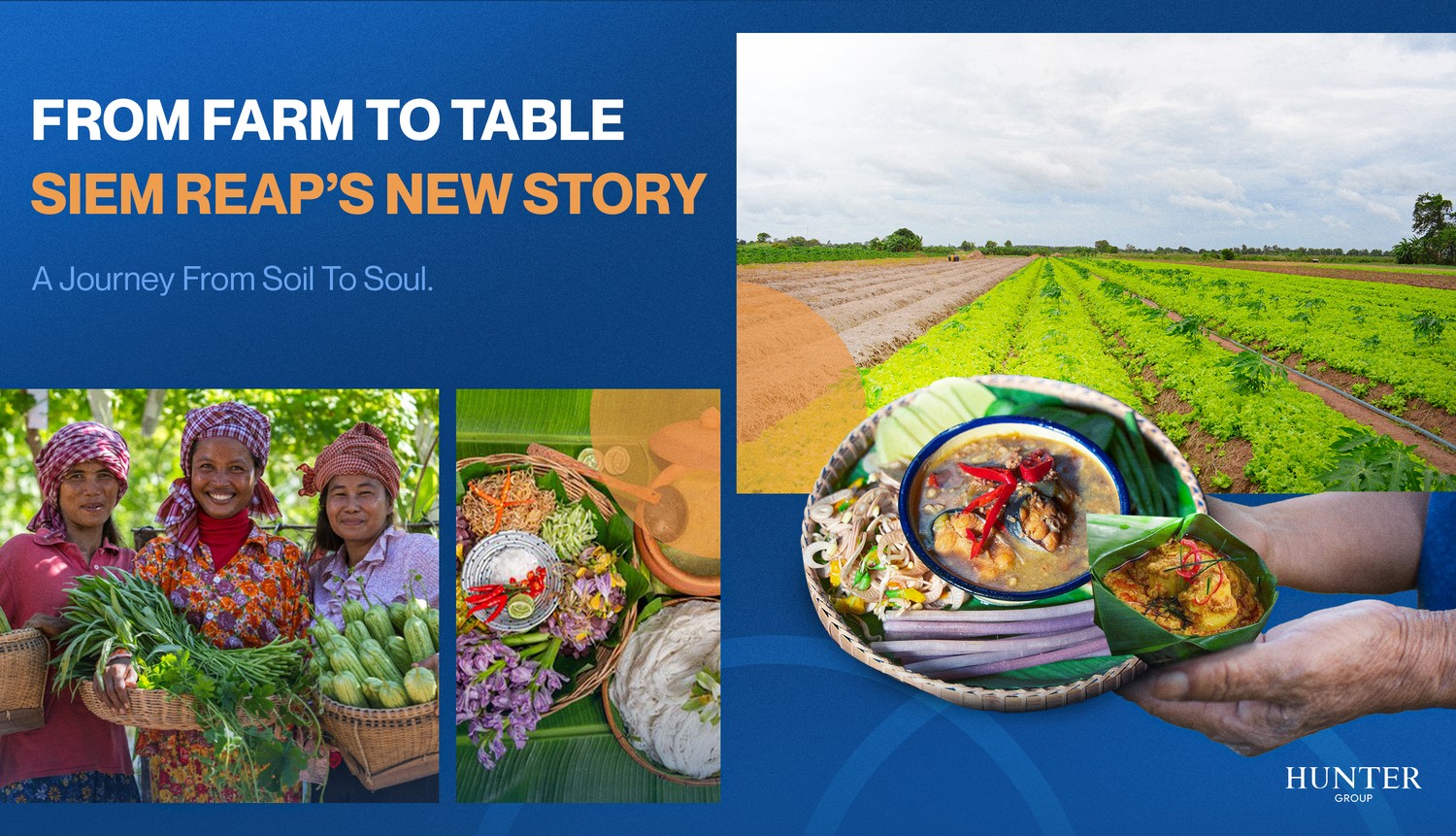When people think of Siem
Reap, they picture Angkor Wat, Pub Street, and tuk-tuk rides weaving through
the city’s charm. But beyond these familiar experiences, Siem Reap has begun to
capture hearts with something far simpler yet deeply memorable: its cuisine.
Cambodian food is finally
beginning to receive the attention it deserves. Across the city, chefs are
breathing new life into traditional Khmer dishes, blending heritage recipes
with modern creativity while staying true to their roots. Yet behind every
plate served lies a quieter hero, the farmers and fertile lands that make it
possible. This is where Cambodia’s next chapter begins. The rise of gastronomy
in Siem Reap is not just a cultural movement; it’s an economic opportunity. As
restaurants grow in number and ambition, so does the demand for high-quality
local produce. From organic vegetables to tropical fruits and herbs,
agriculture forms the backbone of this culinary revival, and it opens doors for
investors eager to shape something sustainable.
Across Southeast Asia,
agritourism has already proven its potential. Countries like Vietnam and
Indonesia have turned it into thriving industries, generating millions of
dollars and creating thousands of rural jobs. In Vietnam alone, agriculture
provided nearly 33% of total employment in 2023, according to the
World Bank. Cambodia is now perfectly poised to follow that path, with Siem
Reap at its heart.
Restaurants like Lum Orng Farm to Table are already
showing what this future could look like. Their ingredients are harvested
directly from their own farm, allowing visitors to taste authentic Khmer
flavors that celebrate freshness, sustainability, and community. But beyond
meals, the restaurant offers cooking classes, providing culinary lessons that
allow visitors to learn about Cambodia’s culinary heritage, tour the garden,
and pick their ingredients.
In Siem Reap, Banteay Srei stands out as a region of promise. Its fertile soil, abundant water sources, and strong government backing make it an ideal location for agricultural and agritourism ventures. A notable example is Preh Dak village, developed as a model tourist village through a government-supported initiative that provided infrastructure improvements, training for local farmers, and marketing support. The project now attracts thousands of visitors, both international and local, each year, drawn by Khmer cuisine such as palm cake, cassava cake, and Khmer noodles, as well as authentic cultural experiences. It’s a clear example of how targeted government support can drive the success of agritourism initiatives. With affordable land prices starting at just $3 per square meter, Banteay Srei offers a rare opportunity to build sustainable projects from the ground up. The area is ideal for ventures that bridge farming and tourism, from organic farms that supply Siem Reap’s restaurants to immersive rural experiences that connect travelers to Cambodia’s agricultural roots.
Imagine a future where
Siem Reap becomes a true hub of gastronomy, where people come not only for its
temples, but to satisfy their souls through food. Siem Reap’s story is evolving
through flavors, people, and possibilities. Agriculture is not just a backdrop
to Cambodia’s culinary journey; it is the heartbeat that keeps it alive. Cambodia’s
soil is rich, its culinary vision is rising, and its communities are ready to
grow with it. Be part of the movement that turns the field into the future, where
every seed planted tells a story of prosperity, purpose, and progress.
